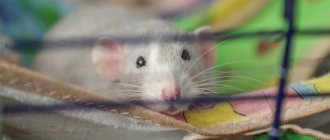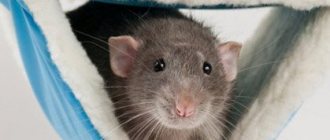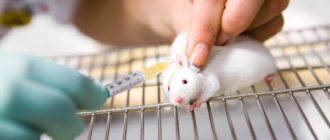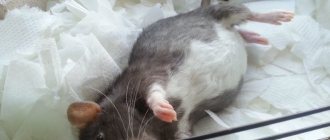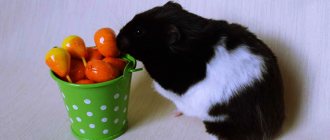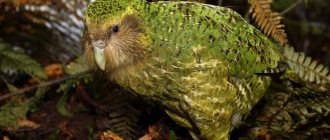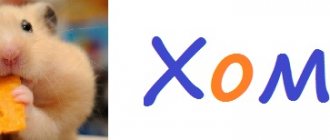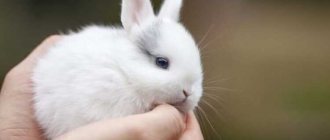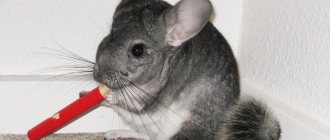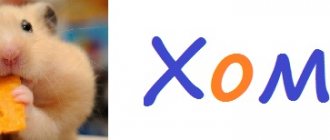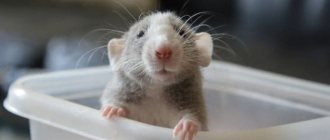How much does a dumbo rat cost (types and prices)
There are several varieties of dambo. This also affects the cost.
What types are there (the minimum price is indicated, current for spring 2021):
- Rex. They are distinguished by slightly curly fur and curled antennae. They come in white, grey, black and tri-color. 300-400 rubles.
- Sphinx. Bald rat with funny folds of skin. May have pink, bluish, black, white, chocolate color. 1500 rubles.
- Siamese. A light fur coat is combined with a dark muzzle, paws, and tail. Color is not always inherited. A willful and aggressive variety. 700 rubles.
- Husky. Beautiful gray-white skin - like dogs of the same breed. Appears in adulthood, the pups are gray. 600 rubles.
- Manx. Lost their tail as a result of a genetic mutation. They have difficulties with the musculoskeletal system and balance, which is why they rarely live past one year. 700 rubles.
- Blue mink. Very beautiful and rare with luxurious blue fur. 1000 rubles.
Dishonest breeders of ornamental rodents can “counterfeit” one species as another. For example, docking the tail of an ordinary rat in order to pass it off as a more expensive Manx. Therefore, you need to be extremely careful when purchasing, so as not to buy a sick or mutilated individual under the guise of a thoroughbred.
Body type
Standard
Decorative rat of the standard breed
The animal has a proportional, flexible, plastic physique without signs of fragility. Females are somewhat lighter and look more graceful. The length of the animal is up to 26 cm (to the tip of the tail). The length of the tail is proportional to the length of the body (including the head).
The eyes are large, round and shiny. The eye color is in harmony with the coat color according to the standard. Small ears are located at the top of the head and are larger in size than the Pasyuk's ears. The head is proportional to the body, of sufficient width.
Coat type and color are determined by the general Standard.
The coat fits well and is shiny. The paws and tail are covered with short hair. Light-colored rats have short, velvety fur on their ears.
The antennae are oblong and proportionally located on the cheeks; above the eyes they are shorter and in smaller numbers. In rodents with other types of hair (rexes, sphinxes, etc.), the whiskers may be short, curled and sparse.
Dumbo
Decorative rats Dumbo
Dumbo differs from the standard in the shape of his ear and skull. Dumbo's ears are lowered and are approximately at eye level. The ear is wider and more rounded than the standard one.
The name "dambo" translates as "baby elephant". That is, the ears resemble the ear of a baby elephant.
The ear should be as open as possible. Folds are not allowed. The dumbo ear has two shapes: open and “tulip”, when the upper edge is slightly directed downwards.
The coat type and coat color correspond to the descriptions in the general Standard.
The Dumbo's skull is slightly wider than that of the standard. Due to the position of the ears, the head of this variety looks wide and flat. The back of the dumbo's head has a barely noticeable convexity.
How much does a pet rat cost?
Beginner rat breeders understand that in addition to caring for and loving the animal, certain expenses will be required. In addition to purchasing the animal itself, you will need a cage and other accessories. The animal will need to be vaccinated and examined by a veterinarian.
Decorative rats
Note! The cost of an animal varies depending on the region of purchase: in the capital and large cities, animals tend to be more expensive. In addition, where the pet is purchased also plays an important role in the price.
Below is a summary table of the cost of a domestic rat depending on the place, region of purchase and breed of animal:
| Breed | Place of purchase | in Russia | in Moscow |
| Standard | private person | 100 | 300 |
| pet Shop | 200 | 500 | |
| nursery | 300 | 700 | |
| Albino | private person | 150 | 350 |
| pet Shop | 250 | 600 | |
| nursery | 500 | 1000 | |
| Standard (blue) | private person | 250 | 350 |
| pet Shop | 500 | 700 | |
| nursery | 1000 | 1200 | |
| Dumbo | private person | 250 | 500 |
| pet Shop | 500 | 700 | |
| nursery | 1000 | 1000 | |
| Rex | private person | 200 | 500 |
| pet Shop | 250 | 700 | |
| nursery | 1100 | 1600 | |
| Sphinx | private person | 200 | 300 |
| pet Shop | 300 | 1000 | |
| nursery | 1500 | 2000 | |
| Tailless | private person | 500 | 1000 |
| pet Shop | 700 | 1500 | |
| nursery | 2000 | 3000 |
What else do you need to buy for your rat?
Savic Freddy 2 Rodent Cage
The costs don't end with purchasing the pet itself. Before buying a rat, you need to first prepare by purchasing everything you need to keep it. Required attributes include:
- Cell. Rats are active animals, so it is better to purchase multi-tiered structures with a plastic tray. Based on 2-3 animals, the area of the first floor should be 2500-3600 cm². The distance between the twigs should be no more than 12 mm, for small rats a little less - up to 10 mm. The cost of the most modest cage that meets the listed parameters is 4-5 thousand rubles. Buying second hand will cost less - 2-2.5 thousand rubles.
- Filler. The cheapest option is shredded napkins or toilet paper. But such a filler quickly becomes dirty and does not remove unpleasant odors well, so it is better to spend money on purchasing sawdust or hay. On average, prices for filler vary from 100 to 200 rubles.
- Little house. The rat definitely needs a cozy corner for privacy. A small plastic house is perfect for this so that the fluffy doesn’t chew through it. This material is also easy to clean with warm water. The cost of such houses starts from 400 rubles.
- Hammocks. Rodents should have a place to rest, sleep or just lie down. To do this, you will need to hang 2-3 hammocks around the cage, maybe more, depending on the number of animals. The price for one product is about 350 rubles.
- Drinkers and feeders. For 2 rats you will need 2-3 pieces of each item. Depending on the model, the price for drinking bowls is 300-1000 rubles, for feeders - 200-500 rubles.
- Game complex. Rats love to frolic, so you should definitely install shells in the cage. The price range here is very wide, since today you can find many toys for rodents on sale. For example, the cost of the simplest running wheel is 150-200 rubles. At the same time, prices for balls for rodents vary between 700-1500 rubles. The bridge can be bought for 400-800 rubles, depending on the size and configuration.
- Tray. There is an opinion among rodent owners that it is impossible to toilet train rats. However, this is not so, you just need to set a goal and devote 2-3 weeks to training. The cost of a rat tray is about 200 rubles. It should be taken into account that the number of containers must correspond to the number of pets living in the cage.
- Feed. Ready-made mixtures for feeding rodents cost from 100 to 800 rubles per package. In addition, the rat will have to be supplemented with natural food - vegetables, fruits, lean meat, dairy products. Typically, all of the listed products can be found in any refrigerator, so you can not take them into account when calculating costs.
To summarize, the starting investment in keeping a rat, depending on the quality of the selected accessories, will range from 6,000 to 13,000 rubles. In addition, it is necessary to take into account that this is only the first expenditure on a pet. Because food and filler will have to be purchased constantly. And the remaining accessories can be changed as needed.
How much a pet rat costs is a controversial question. The cost of a rat and everything needed to keep it varies depending on many factors. Therefore, before going to the pet store, you will need to first calculate all the costs so as not to find yourself in an awkward situation.
Where is the best place to buy a rat?
When purchasing a decorative rat, future owners inevitably face the question of where is the best place to buy a pet. Experienced breeders recommend not to succumb to the temptation of purchasing an animal from your own hands at the cheapest price. It is better to pay the required amount and get a healthy rat with a good pedigree.
As a last resort, you can go shopping at a pet store. Even in the event of an unplanned pregnancy of a female, the rat pups can always be given away. But you won’t have to spend additional money on constant treatment of many diseases in expensive veterinary clinics. Moreover, most specialized stores have a good price/quality ratio.
Description of colors by section
Homogeneous
Black decorative rat
The hair is colored uniformly in one tone. The exception is the ash-blue color. The body has a uniform color without spots or ticking.
- Black;
- Blue (Russian blue, smoky);
- White;
- Champagne;
- Blue;
- Platinum;
- Russian silver and other solid colors.
Ticked
Agouti Rat
The body has a single color. Part of the hair is colored unevenly, in two or more colors (with belts). Among these zone-colored hairs are hairs with a uniform color.
- Agouti (platinum, Russian blue, blue);
- Faun;
- Cinnamon;
- Amber;
- Pearl (cinnamon, blue);
- Topaz.
Silver
Silver-blue rat
This section is characterized by alternating silver hair with hairs of a different color (uniform or ticked). The color is bright and uniform.
- Silver-mink;
- Silver - blue;
- Silver-black;
Combined
Siamese Dumbo Rats
The color consists of several colors (except white), which are arranged in accordance with the norms prescribed by the Standard.
- Siamese (blue, Russian blue, mink, black-eyed Siamese);
- Himalayan (blue or with black eyes);
- Burmese (Russian, wheat, sable, blue).
Marked
Decorative rat with marked color
Marking is a pattern, i.e. combination of white color with colored areas.
- Irish;
- Anglo – Irish;
- Raincoat (European, with blaze);
- Hood (or shortened hood);
- Cap (or cap with a train);
- Spotted - raincoat (or spotted);
- Train (or train with blaze);
- Masked;
Blaze is a white wedge-shaped spot on the face.
Husky (blooming)
Decorative Husky Rat
This type combines blaze (in a coat or train) with a perennial base color. Symmetry and contrast are important components for this marking. Cubs up to 3 weeks of age have a uniform color with a blaze, but later the husky's coat begins to turn silver.
- Raincoat;
- Daisy chain;
Non-standard colors
These colors are not recognized by the Rat Club.
- Dove;
- Devil;
- Black devil
An animal with these colors receives marks at the exhibition, but does not receive titles.
Odd-eyed
White rat with different eye colors.
Coat color - any. One eye is pink or red, the other is black or ruby.
Selecting the breed
It is worth saying that the choice of breeds is really large; the animals differ in body size, color, character and behavior. Next, we will look at each separately, which will allow you to make the right choice.
White
It should be noted right away that such a breed does not exist in nature. But there are white individuals who are called albinos. The animal gets this color as a result of a genetic failure. Albinos can appear in absolutely every breed.
If we talk about natural conditions, you will not find adult animals with this color in the wild. The fact is that when albinos are born, they are eaten by their own relatives. But they are popular among breeders; these cute rodents have a snow-white coat and beautiful ruby eyes.
It is also worth saying a few words about rodents that have a coat of green, blue, pink and other shades. There are no rats with this color. If you see such animals for sale, know that these are the work of scammers.
They add a special substance to animal food, which is a coloring pigment. When this substance is consumed, the animal's fur changes color. After stopping feeding, the color returns to normal, but such a diet will not leave its mark on health.
Dumbo
Very cute and beautiful little animals, distinguished by their rather large round ears. We are all familiar with the cartoon character - the baby elephant Dumbo, but this one can be said to be a miniature copy.
They have an easy-going character, quickly get used to their owner, and are very active and playful. Representatives of this breed can have white, gray and black fur.
Blue
As already mentioned, there is no breed that has blue fur. These representatives have a light gray coat.
The name was given for the reason that the down really has a blue tint, which is why the fur appears to be of such tones. It is worth saying that these animals are highly valued and belong to aristocratic representatives.
Rex
Very attractive animals with tousled fur, such fur sticking out in different directions creates the impression that the animal is very fluffy. Adult rodents have cute curls on their backs. Babies are born without curls; they appear with age. Also, from birth and as they grow older, their color changes.
Sphinxes
These representatives have no fur at all. It is worth saying that the breed is very expensive and is valued among breeders. The skin itself can have different shades, some are spotted. If the animal is purebred, there will be a small fluff under the eyes, on the ankles and in the groin area.
Anurans
When purchasing such a breed, you need to be as attentive and careful as possible so as not to fall for scammers. In fact, the breed is very rare and acquiring a cub will not be so easy.
They lack a tail, and in its place you can see a small tubercle. Fraudsters dock the tails of the cubs and pass them off as purebred animals. Rodents can be of any color; they can be short-haired, long-haired and even hairless.
Odd-eyed
Representatives of different eyes can appear in any breed. They are valued for different eye colors and are considered the most expensive. They can be black, red and ruby.
Coat type
Standard
The coat is smooth, shiny, tight-fitting; the mustache is long and dense. The paws and tail are covered with fine fur. The ears have short velvet fur. The undercoat is well formed.
Curly (rex)
Curly rat (Rex)
The hair is dense, dense and forms curls. On the belly the hair is straighter. The amount of hair is less than the standard coat type, or it is absent. The hair is inferior in shine to the standard type.
Tactilely, the hair is slightly coarser than standard, without signs of brittleness or stiffness. The mustache is short and curled.
Wavy (teddy, corduroy)
Wavy Rat Corduroy Thick
, soft, even coat, more wavy than curly. Visually, the coat is slightly disheveled, but looks well-groomed. There is a thick undercoat, but the awns are practically absent. The mustache is of good length, with a slight wave.
Sphinx
Decorative rat Sphynx
The skin of the Sphynx is almost completely bald; she is healthy, bright and soft. In some areas of the body (on the muzzle, limbs and groin area) pubescence is allowed. There may be folds. The mustache is short and curly.
Downy
The body of the animal is covered with short, thin, soft fluff. On the face and lower body the hair is thicker and longer. There is no guard hair. The skin is pleasant to the touch, velvety. The antennae are slightly curled downwards. Bare areas of the body are not allowed.
Half Phinx (double rex) outside the standard
Decorative rat of the Double Rex breed.
The fur is short and harsh. The mustache is short and curls tightly. Double Rex has two types:
- The rat has hairless and hairy areas of the body. They may change over time, i.e. bare skin becomes overgrown, and pubescent skin becomes bald.
- The rodent has short hair only on the face, tail, legs and belly.
Satin (satin, longhair)
Satin Rat
The coat is thin, silky, longer than usual. The white color has a yellowish tint. The impression of “shining” wool.
Velor
There is very little or no guard hair. The coat is shorter than that of the Rex, curled or crimped. The mustache curls tightly.
What to feed a decorative rat at home?
Care and maintenance of a rodent have its own nuances in nutrition. Although animals are unpretentious in food, their diet should contain as little fat as possible. Adults are fed 2 times a day, babies - 4 times. They also need clean and fresh water. What to feed a decorative rat at home:
- Grain base (wheat, oats, barley, corn, millet). High-quality balanced mixtures are sold in pet stores.
- Vegetables, fruits: white cabbage, carrots, bananas, cucumbers, apples, boiled potatoes, pumpkin, eggplants, grapes.
- Protein food (given once a week): a piece of boiled meat, cottage cheese, cheese, egg.
- Chicken bones: animals love to sharpen their teeth with them.
- In autumn and winter, it is recommended to give pets ready-made vitamins from a pet store.
Decorative rats - care and maintenance: what should not be given as food:
- chocolate, sweets, candies;
- raw beans or beans;
- smoked sausage;
- raw potatoes;
- chips;
- soda and sweet drinks;
- Brussels sprouts and red cabbage.
What grass can be given to decorative rats?
Greens should be present in the daily diet of rodents. What do decorative rats eat from grasses:
- dill;
- dandelion;
- parsley;
- cilantro;
- plantain;
- radish tops.
Decorative rat - reproduction
Breeding of decorative rats is carried out using a pair of opposite-sex individuals aged 6 months. Girls weigh 200-400 g, they are nimble and neat. Boys - 450-600 g each, mostly clumsy and sloppy. The female's estrus repeats every 10 days. Mating is carried out for 1-4 hours in any territory - it does not matter with a girl or a boy. The female's pregnancy lasts 21 days, during which time she needs to eat more fruits and vegetables. Before giving birth, the expectant mother builds a nest - she drags out various materials (rags, toilet paper). The female gives birth to up to 8 rat pups weighing 5-7 g.
If a couple lives together, then at the time of birth the male must be separated so that he does not show aggression towards the babies. It is important for the mother in labor to have access to clean water so that she does not eat her offspring. The mother feeds the newborns for a month; from the third week of life they begin to try adult food. Babies' fur grows by 8-10 days, and their eyes open between 12 and 16 days. At the age of 1.5 months, the animals become completely independent and must be separated by gender or sold. After 12-18 months of life, females can no longer have offspring.
Cons of decorative rats
This may be a disadvantage for you, or it may be an advantage. Depending on your schedule, you may be able to enjoy their company more. For example, if you work during the day and come home in the evening to relax, this could be a great opportunity to bond with your pet.
On the other hand, if you work mornings and afternoons and go to bed early, you may not have much time to enjoy the active company of your pet rat. But these rodents change their schedule to be more active when you're around, so take that into account.
These rodents don't live long
Rat animals live from 2 to 3 years, so when choosing them as a pet, you should take this fact into account. It's not much at all, and the time will pass faster than you think. Especially if you become emotionally attached to your pet.
They get sick easily.
They can have quite a few congenital diseases in rats, such as breathing problems, tumors, and spinal problems. They will likely need medical care throughout their lives, so know that you will have to take them to the vet to address some of these issues.
In most cases, male rats should not be kept with female rats.
Unless your pet is neutered, you should not allow rats of different sexes to live together. Female rats can become fertile at 5-6 weeks of age and can give birth to a litter of 10 babies in less than a month. Therefore, if you have rats of both sexes, you should either neuter them or keep them in separate cages.
Pet rats need a lot of space to live
We're not talking about little hamsters here. Rats are a bit larger and will need a lot of space to live. This means you'll either have to buy a fairly expensive cage or build your own if you can afford it.
Rats need attention
Rat animals are very sociable and need daily attention. Therefore, you should always have more than one pet rat at a time. If they are left alone for a long time, they become increasingly depressed and may even die from it.
Pet rats love to bite
It mostly depends on the personality of the animal, but the average rat will chew anything that interests them
It doesn't matter if it's a toy, a box or a computer power cord - they will chew through it. You either need to protect everything from rats or just keep an eye on them
Training of decorative rats
There are many tricks that complement the natural habits of rodents and will bring pleasure to the owners. To do this, you will need a treat - a piece of meat, a pumpkin seed. How to train a decorative rat:
- Return to the cage. After the animal has taken root, it can be released for a walk around the apartment. It’s easy to return the animal: at the same time you need to sprinkle food, knock the bowl on the floor and call your pet - he will come running.
- “Sit” or “serve.” You need to hold the treat over the animal’s head and say the command. The rat will learn that it gets a treat after it stands on its hind legs and will follow the order to “sit” every time, even without a treat.
- Run in circles. You can move the treat along a trajectory and give it to the animal after it completes the trick. Also, with the help of treats, it is easy to teach a rat to run up stairs.
